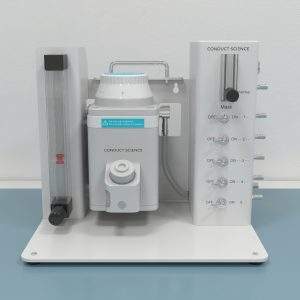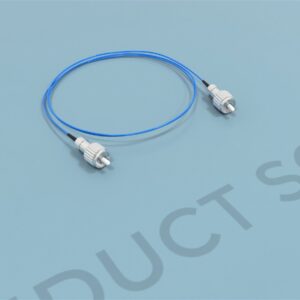$3,990.00
The Zebrafish Rotation test apparatus consists of a circular container featuring transparent walls encased within a rotating acrylic drum. For experiments related to zebrafish retinal degeneration, the acrylic drum can be adorned with cues, commonly including a black segment. Additionally, a central post is strategically positioned to deter zebrafish from crossing the midline of the inner chamber.
Optional add ons include:

MazeEngineers empowers preclinical neuroscience research with meticulously designed, customizable behavioral apparatuses. From manual classic mazes to fully automated smart systems, we provide the tools scientists need to capture high-quality, reproducible data for studies on learning, memory, anxiety, and depression.

bool(false)



Take advantage of Neuralynx, Ethovision Integration, SMS and Email integration with the Conductor Science Software. No I/O Boxes Required
Features |
Rotation from 0-20rpm. |
Center post diameter: 3cm |
Main Rotating Chamber: 10cm diameter. Transparent |
Rotating drum: 15cm diameter |

The Zebrafish Rotation Test, also known as the Adult Escape Response Test, serves as a pivotal behavioral assay for screening adult mutant zebrafish afflicted with visual impairments. This test is essential for quantitatively assessing the visual sensitivity of adult zebrafish, focusing on the absolute visual thresholds of their cones and rods.
When exposed to a simulated predator, represented by a black stripe within the task, the zebrafish display avoidance behavior, moving away from the threatening stimulus. Additionally, they avoid dark spots against a white background (Ninkovic and Bally-Cuif, 2006).
In this experimental setup, the fish are placed in a stationary transparent container encircled by a rotating drum covered in white paper. Positioned centrally within the container is an opaque post. The outer drum features a black stripe mimicking a threat to the zebrafish.
As the outer drum rotates, the fish instinctively move towards the side of the opaque post, shielding them from the black stripe. This behavior is indicative of their visual acuity and can be leveraged to evaluate their visual performance (Li and Dowling, 1997).
By modulating light intensity using a white light source, researchers can reliably measure the dark adaptation progression after light exposure and determine the absolute thresholds of rods and cones.
The Escape Response Paradigm was originally devised by Lei Li and John E. Dowling in 1997 to screen for the dominant mutation causing night blindness (nba), which induces gradual retinal degeneration in zebrafish (Hans Maaswinkel et al., 2005).
The equipment comprises a transparent circular stationary container, approximately 10 cm in diameter.
Surrounding this stationary container is a rotating acrylic drum covered in white paper. The drum features a 5×5 cm black stripe intended to mimic a threatening stimulus.
Inside the container, a central opaque post, approximately 3 cm in diameter, serves to prevent the fish from crossing the midline.
From above, the drum is illuminated using a white light source, with intensity adjusted based on experimental requirements.
The drum rotates at a speed of 10 rpm, driven by a motor connected via a belt. Behavioral activity of the subjects is monitored and recorded using video tracking software such as Noldus Ethovision XT.
The equipment comprises a transparent circular stationary container, approximately 10 cm in diameter.
Surrounding this stationary container is a rotating acrylic drum covered in white paper. The drum features a 5×5 cm black stripe intended to mimic a threatening stimulus.
Inside the container, a central opaque post, approximately 3 cm in diameter, serves to prevent the fish from crossing the midline.
From above, the drum is illuminated using a white light source, with intensity adjusted based on experimental requirements.
The drum rotates at a speed of 10 rpm, driven by a motor connected via a belt. Behavioral activity of the subjects is monitored and recorded using video tracking software such as Noldus Ethovision XT.
Adult zebrafish are individually housed in transparent containers before the experiment begins. Initially, the subjects undergo light adaptation by exposure to a bright light source emitting approximately 3.25×103 μW/cm2 for about 20 minutes.
Following light adaptation, the subjects experience complete darkness (dark adaptation) for approximately 2 minutes. Subsequently, the subjects are introduced into the apparatus to assess the threshold light intensity required to elicit an escape response.
Initially, the light intensity is set at log I = -3.0 and can be adjusted upwards in increments of 0.5 log units using neutral density filters to modulate the light intensity of the drum (Li and Dowling, 1997).
If the fish do not respond to the initial intensity, the light intensity is increased by half a log unit until the fish exhibit an escape response. The lowest light intensity at which an escape response is observed is recorded as the absolute threshold.
For mutant screening, the light intensity is set to log I = -5.0, approximately 1 log unit higher than the absolute rod threshold observed in wild-type zebrafish. Individuals that do not display the escape response are segregated for further screening in subsequent days (Li and Dowling, 1997).
To evaluate mutant individuals in subsequent generations, subjects undergo chemical mutagenesis using ENU and are then crossed with wild-type fish to produce the F1 generation.
In the F1 generation, individuals exhibiting night blindness traits are crossed with wild-type fish to produce the F2 generation. Both successive generations are examined to assess visual thresholds for both rods and cones using the escape response paradigm.
Apart from Lei and Dowling, Hans Maaswinkel et al. identified three dominant mutations associated with night blindness: night blindness e (nbe), night blindness f (nbf), and night blindness g (nfg) in 2005 (Hans Maaswinkel et al., 2005).
Hans Maaswinkel and colleagues utilized a comparable apparatus with minor adjustments in dimensions and light intensity settings.
Initially, the light intensity was set at log I = -7.0 and incrementally increased by half-log units until the fish exhibited the escape response in at least five out of ten trials.
The sample data is depicted by comparing the absolute thresholds of the control and mutant subjects. It is evident from the graph that both the absolute threshold of cones and rods in mutant subjects are raised significantly.
The adult escape response model has a long history and remains the sole apparatus for isolating adult mutant zebrafish based on visual defects.
Moreover, this method has demonstrated a positive correlation between circadian rhythms and visual sensitivity.
This approach is not limited to the nba mutant strain; it has identified numerous mutant strains with progressive retinal degeneration (Maaswinkel et al., 2003, 2005).
These mutations are particularly relevant to human models because many outer retinal dystrophies in humans are progressive and predominantly affect the elderly patients.
The adult escape response task is time-consuming, and skilled personnel is required to conduct the experiment.
Lei Li, Dowling JE. A dominant form of inherited retinal degeneration caused by a non-photoreceptor cellspecific mutation. Proc Natl Acad Sci USA 1997; 94: 11645–11650.
Maaswinkel H, Riesbeck LE, Riley ME, Carr AL, Mullin JP, Nakamoto AT, Li L. Behavioral screening for nightblindness mutants in zebrafish reveals three new loci that cause dominant photoreceptor cell degeneration. Mech Ageing Dev. 2005; 126:1079–1089.
Fleisch V. C., Neuhauss S. C. F. Visual behavior in zebrafish. Zebrafish. 2006; 3(2):191–201. doi: 10.1089/zeb.2006.3.191.
Ninkovic J, Bally-Cuif L. The zebrafish as a model system for assessing the reinforcing properties of drugs of abuse. Methods. 2006; 39(3):262–274. doi: 10.1016/j.ymeth.2005.12.007.
Yes, the rotation is controlled with the Conductor Software (Free with your purchase).
The zebrafish behavior is not logged, but the Conductor Software integrates with Noldus Ethovision, allowing for video tracking dictating the behavior of the rotation chamber. Amazing!
Yes the rotation chamber can be changed within 25% of the offered size. If you need another size please let us know and we will provide you with a reasonably priced quote.
Patterns are attached with paper and clips. If you need a more robust methodology we can provide acrylic circular inserts. However, only certain sizes are available. Please inquire for more details
There are no questions yet. Be the first to ask a question about this product.